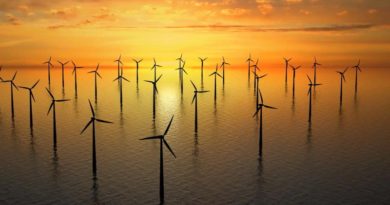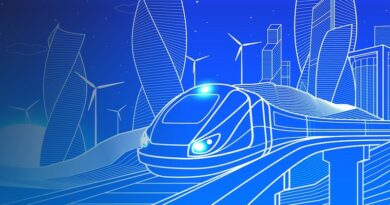
IT has a major role to play in meeting Scope 3 ambitions
Can you explain what these scopes are and why they are important?
The notion of Scope has been defined by the World Resources Institute and the World Business Council for Sustainable Development[i]. It is a very good global approach to effectively measure carbon emissions generated by any organization, and an even better guide to assess the best remediation that can be undertaken to improve these. It has proven to be very effective in our industry, which, according to analysts, produces about 4% of global greenhouse gas emissions. This 4% is globally encompassing WRI’s “Scope 1” and “Scope 2”, or carbon emissions generated by the direct operations of a company, within the company. These are the common internal factors companies are working on to reduce their carbon footprint. Like our peers, we have been working on these items, and Atos has been regularly at the top of the Dow Jones Sustainability Index (DJSI) World and Europe or the Carbon Disclosure Project rankings for nearly 10 years.
The aspect that will become of crucial importance in the near future is the impact that companies can have more broadly on their ecosystem and value-chain – or “Scope 3” as per WRI classification.
To say it in other words, Scope 1 and 2 covers what you can directly control, Scope 3 what you can decisively influence. While a growing number of organizations are today implementing emission reduction plans for the first two scopes, few are addressing scope 3 – which is nonetheless the biggest contributor to carbon impact. Only a third of global high-tech companies have set carbon neutrality targets that include scope 3. European companies are slightly ahead of the curve, yet more than 60% of them still do not have scope 3 targets[1].
Commitment to Scope 3 will prove to be unavoidable: first, because the European regulator, via the CSRD (Corporate Sustainability Reporting) directive, has introduced an obligation for European companies to report on their scope 3 by 2024, with their 2023 data. In addition, only companies that fullfill SBTi requirements – including Scope 3 – can claim that they have a path to become Net Zero. So, it is just a question of months before it becomes compulsory. More significantly, and beyond regulation, we have reached such a level of public awareness on these issues that commitment to sustainable development has become a global trend impacting the valuation of companies. Not only in terms of image, but also in terms of financial value. Research shows that as much as 78% of investors want companies to prioritize ESG efforts, even if it has a negative effect on short-term earnings[2]. 65% of employees would prioritize working for an employer that focuses on the environment[3]. And 85% of customers say they have shifted their purchasing behavior in favor of sustainability in the past five years[4].
So how can companies identify and activate this “Scope 3” metric?
A study by the World Economic Forum estimated that digital technologies have the potential to reduce global carbon emissions by about 20% by 2030 in the three most emitting sectors[5]. We can therefore see that digital technologies bring a potential to reduce emissions 5 times greater than their own impact, which is considerable. So, our challenge as an industry is not only to reduce our own emissions, which some of us have started to do, but, more importantly, to help our customers reduce their own footprint, thus acting on their Scope 3. This is where we can make the biggest difference.
As a provider of IT services and devices, we are de facto at the heart of our customers’ scope 3: we maintain their employees devices fleets; their own services and data are very often hosted either on on-premises we manage or on our cloud infrastructures or those of our partners. It is our responsibility to provide them with effective solutions.
You can only start decarbonizing when you can measure, and you can only measure when data is collected in a structured way to be actionable.
That’s what our core expertise is all about.
With Scope 3 considered, IT leaders must report on the GHG emissions of a wide variety of vendors: manufacturers, software vendors, IT service providers, and cloud providers. As an IT services company, Atos commits to its clients via “Decarbonization Levels Agreement”, which is a contractual commitment at the global level to reduce carbon emissions between day 1 and the end of the contract we signed with them.
What tools are available to CIOs and companies today to effectively act on their Scope 3?
If we dig into more details, companies can now access all the necessary tools for collecting, consolidating, analyzing, and exploiting data that were previously only available in a dispersed manner throughout the company. We have for example just launched a “Sustainable Digital Workplace” offer that provides our customers with all the indicators they need to get an extremely accurate picture of their global situation in real time, but also to provide them with predictive scenarios on the evolution of their IT consumption and emissions, and eventually remediation actions, all based on objective, field originated data. In practice, this translates into the provision of various dashboards that make it possible to monitor the company’s main indicators with an extremely precise level of granularity, at the level of the IT departments, but also down to the level of departments, and even at the level of each employee.
We offer over 10 different dashboards to track metrics as diverse as device redeployment or improved electricity use. Of course, data is also accessible to CSR managers to support their reporting. This move marks a major step forward in providing clients with access to new sustainable IT solutions, as 57% of enterprise IT’s carbon footprint is due to workplace devices. In addition to data, this offer also includes a strong hardware dimension. It is estimated that every year, 40 million tons of e-waste are generated by IT, with only 12.5% being recycled. That’s the equivalent of throwing away 800 laptops every second. Most companies replace employee laptops every three to four years, with each new device accountable for emissions of more than 300 kg of CO2e. What we offer to our customers with our “Sustainable Digital Workplace” is also to recondition and reuse equipment with an uncompromising level of quality and user experience. This makes it possible to completely rethink and optimize product lifecycle management. We have drastically selected our partners in several geographies, to limit as much as possible unnecessary shipping that could offset the efforts made by our customers. It is the circular economy put at the service of large corporations.
This classification by “Scope” therefore makes it possible to cover all sources of CO2 emissions, both those of the company and those of its ecosystem, ultimately generating a real virtuous circle with everyone participating in the emissions’ reduction of all the members of their ecosystem.
Can public authorities help accelerate the deployment of these actions?
Public authorities have of course a decisive role to play to leverage all the opportunities that lie ahead of us and make a decisive impact. First, I believe it is significant that an AI framework is discussed at the EU level, so as we can all collectively embrace the AI wave that is already giving so many benefits. We have for example inked a global partnership with World Wide Fund for Nature NGO focused on wildlife preservation, where AI is clearly at the center stage in identifying potential areas of vigilance at a very early stage. Another example I can think about are public-private partnerships, with many development opportunities in the North/South relationship. The usual scale of these projects gives the opportunity to deploy the most advanced infrastructure and digital workplace technologies to their full extent, improving sustainability and services to the users and customers. They represent a perfect laboratory of the way forward as they leave room to innovate and imagine new solutions. If you combine the innovative power of private sector, and the traction of public initiative, then we are getting closer to the point where what we do collectively is good for the environment, good for the citizen, and good for our customers and for trade altogether.
About Atos
Atos is a global leader in digital transformation with c. 105,000 employees and annual revenue of c. € 11 billion. European number one in cybersecurity, cloud and high-performance computing, the Group provides tailored end-to-end solutions for all industries in 69 countries. A pioneer in decarbonization services and products, Atos is committed to a secure and decarbonized digital for its clients. Atos is a SE (Societas Europaea) and listed on Euronext Paris.
Tech Foundations is the Atos Group business line leading in managed services, focusing on hybrid cloud infrastructure, employee experience and technology services, through decarbonized, automated and AI-enabled solutions. Its 52,000 employees advance what matters to the world’s businesses, institutions and communities. It is present in 69 countries, with an annual revenue of € 6 billion.
[1] Harvard Business Review France, Réduction des émissions de scope 3 dans les entreprises high-tech européennes
[2] EY Global Corporate Reporting and Institutional Investor Survey, November 2022
[3] Future of the sustainable workplace in the age of COVID-19 and climate change, Unily, 2020
[4] Global Sustainability Study 2021, Simon Kucher & Partners
[5] World Economic Forum, Digital solutions can reduce global emissions by up to 20%. May 2022
[i] The Greenhouse Gas Protocol, launched in 2001 by the World Business Council for Sustainable Development (WBCSD) and the World Resources Institute (WRI), classified GHG emissions into three scopes.




